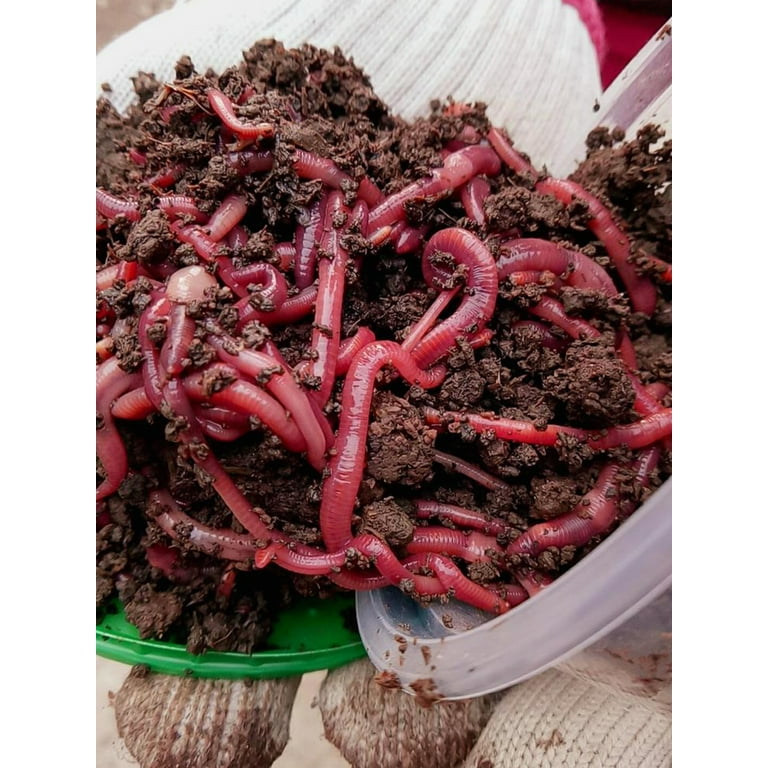Discovering the Devices of Red Wiggler Composting: A Comprehensive Overview to the Refine and Its Positive Effect On Sustainable Gardening Practices
The intricate systems of red wiggler composting, making use of the special physiology of Eisenia fetida, present an engaging avenue for boosting lasting gardening techniques. As urban horticulture gains traction, understanding the subtleties of this composting approach becomes increasingly pertinent.
Recognizing Red Wigglers
Red wigglers, medically known as Eisenia fetida, are a species of earthworm very related to for their effectiveness in composting organic waste. These worms prosper in nutrient-rich atmospheres, specifically in rotting natural issue, making them optimal for vermicomposting systems - Red Wiggler Composting. Characterized by their reddish-brown pigmentation and segmented bodies, red wigglers are smaller than usual earthworms, usually gauging between three to 4 inches in length
Their distinct physical characteristics enhance their composting capacities; for example, they possess a high reproductive rate, enabling populaces to multiply quickly under suitable problems. Red wigglers consume organic product, simplifying via their gastrointestinal systems, which causes nutrient-rich spreadings that act as an exceptional organic fertilizer. Their ravenous cravings allows them to refine huge quantities of food waste successfully, considerably decreasing land fill payments.
In enhancement to their composting prowess, red wigglers play a crucial function in soil wellness. Red Wiggler Composting. They aerate the dirt and facilitate the decay of natural matter, further improving the dirt ecological community. Comprehending the features and environmental benefits of red wigglers is essential for any person looking to apply sustainable gardening methods via efficient composting approaches
The Composting Process
The composting process includes breaking down organic materials right into nutrient-rich garden compost, a task that red wigglers excel at because of their specialized gastrointestinal systems. These worms consume food scraps, backyard waste, and various other raw material, transforming them into beneficial compost through a collection of organic and chemical procedures.
At first, the raw material is combined with bedding products such as shredded paper or dried fallen leaves, producing an optimum atmosphere for the worms. As the red wigglers ingest this mix, they simplify through their intestine, where bacteria even more decay the product. This process generates heat, advertising microbial activity, which accelerates disintegration.

Benefits of Red Wiggler Composting
Lots of gardeners and eco-conscious individuals acknowledge the numerous benefits of red wiggler composting, making it a popular selection for effective waste management. One of the primary benefits is its ability to significantly reduce natural waste in garbage dumps - Red Wiggler Composting. Red wigglers efficiently break down kitchen area scraps and various other eco-friendly products, transforming them right into nutrient-rich vermicompost that enhances dirt wellness
Moreover, red wiggler composting enhances dirt framework and fertility. The resulting vermicompost is bursting with valuable bacteria, which advertise plant growth and improve nutrient retention. This all-natural plant food not just sustains sustainable gardening practices but additionally minimizes dependence on chemical fertilizers, fostering a much healthier ecological community.
Furthermore, red wiggler composting is a space-efficient method, making it perfect for urban gardeners with limited room. The procedure can be conducted inside your home or outdoors, permitting year-round composting despite environment problems. Furthermore, red wigglers are low-maintenance organisms that call for minimal treatment, making them obtainable for novice gardeners.
Essentially, the benefits of red wiggler composting expand past waste decrease; they contribute to healthier dirts, lasting horticulture techniques, and ecological stewardship, placing it as a valuable practice in contemporary gardening.
Best Practices for Composting
For successful red wiggler composting, adhering to ideal techniques is important to optimize performance and make sure a productive setting for these worms. Initially, it is very important to preserve a proper carbon-to-nitrogen proportion, preferably around 30:1. This balance advertises optimal decomposition and enhances the worms' wellness. Integrate a mix of eco-friendly products, such as vegetable scraps, and brown materials like shredded paper or cardboard.
Following, monitor wetness degrees, going for a wet, sponge-like uniformity. Overly damp conditions can result in anaerobic decomposition, while extreme dryness may prevent worm task. Furthermore, make certain proper oygenation by turning the garden compost routinely, which aids prevent compaction and permits find out this here sufficient oxygen flow.
Temperature level is one more critical variable. Preserve a series of 55 ° F to 77 ° F(13 ° C to 25 ° C) to promote worm task and microbial growth. Stay clear of introducing meat, milk, and oily foods, as these can bring in insects and produce odors.
Enhancing Sustainable Gardening
Lasting gardening embodies a holistic strategy that balances ecological principles with practical horticulture techniques. By incorporating approaches such as red wiggler composting, gardeners can substantially enhance their techniques, cultivating a more resistant ecosystem. Red wigglers, renowned for their efficient disintegration capacities, transform natural waste into nutrient-rich this page compost, thus enhancing the dirt without relying upon chemical plant foods.
Applying lasting horticulture strategies, such as plant rotation, companion planting, and mulching, additional enhances the benefits of composting. These techniques not only improve soil structure and fertility however also advertise biodiversity, drawing in websites beneficial pests and microorganisms that add to grow health and wellness. Making use of native plants can minimize water intake and decrease maintenance, straightening with water conservation efforts.

Verdict
In verdict, red wiggler composting represents an important method for boosting lasting gardening methods. Ultimately, the adoption of red wiggler composting can considerably contribute to environment-friendly gardening, profiting both metropolitan and newbie garden enthusiasts in their farming initiatives.
The complex devices of red wiggler composting, utilizing the unique physiology of Eisenia fetida, offer a compelling opportunity for boosting lasting gardening practices. Understanding the qualities and ecological benefits of red wigglers is necessary for any person looking to implement lasting horticulture techniques via efficient composting techniques.

In conclusion, red wiggler composting stands for an important approach for enhancing sustainable horticulture practices. Inevitably, the fostering of red wiggler composting can substantially contribute to green gardening, profiting both city and beginner garden enthusiasts in their growing efforts.